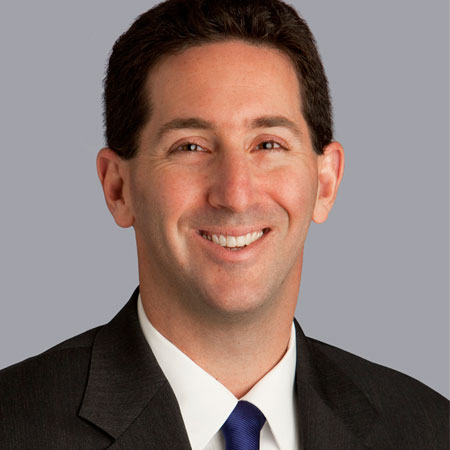'Innovation' Meeting Shows FDA-Industry Gap On NDI Guidance Details Remains
Executive Summary
Panel discussions and public comments during FDA public meeting show industry sees agency, as it stated in draft NDI notification guidances published in 2011 and 2016, is allowing little room for innovation through making new ingredients available for use in VMS products. FDA says immense growth of the VMS market since DSHEA passed shows numerous products available in US contain substances that haven't been notified to the FDA with proof showing they are dietary ingredients and are safe for use.
Absent from the dispute between the US Food and Drug Administration and the vitamin, mineral and supplement industry over new dietary ingredient notifications is disagreement on whether the market has changed since the requirement was imposed in 1994.
FDA officials and industry stakeholders agree on little else about the NDI notification requirement established 25 years ago in the Dietary Supplement Health and Education Act, making all dietary ingredients present in the US food supply before Oct. 15, 1994, eligible for use in VMS products without pre-market notification to the agency and requiring notifications for all other substances intended for use as dietary ingredients in products marketed as supplements to a person's diet.
And eight years after Congress directed the agency, through a provision in the Food Safety Modernization Act, to publish a guidance for NDI notification compliance, the gap over guidance details remains wide between the FDA and industry.
"To be sure, DSHEA did not assume that the world would stand pat as existed as it did it in 1994. Rather, it clearly envisioned a dynamic dietary supplement market and a role for innovation," said Steven Tave, director of the FDA Office of Dietary Supplement Programs at the opening of a May 16 public meeting on NDI notifications.
Panel discussions and public comments during the meeting, though, showed the industry sees the agency, as it stated in draft NDI notification guidances published in 2011 and 2016, is allowing little room for innovation through making new dietary ingredients available for use in VMS products.
The "attempts in the guidance to, in my view, broaden as many ingredients as possible that could be defined as needing an NDI [notification]. And not surprisingly, industry would like to rather narrow that. We need to find a balance on that," said American Herbal Products Association President Michael McGuffin during his presentation.
Agency officials say the FDA's regulatory framework for VMS manufacturing and marketing casts a wide net for substances that should be notified pre-market to the FDA with proof that they are dietary ingredients with reasonable expectation of safety for their intended uses. However, the immense growth of the VMS market since DSHEA passed shows that despite the net's breadth, numerous products available in the US contain substances that haven't been notified to the FDA with proof showing they are dietary ingredients and are safe for use.
Supplement manufacturers, ingredient suppliers and other industry stakeholders contend that the FDA has set an unnecessarily high bar for NDI notification to clear its evaluations while providing insufficient guidance on studies and information needed for successful notifications. Stakeholders acknowledge, though, that some firms either knowingly or unintentionally are marketing products with ingredients that clearly are not dietary, that should but have not been notified to the FDA or that are copies of notified ingredients that have not been notified to the agency about their intended use (see sidebar).
The FDA conducted the meeting – "Responsible Innovation In Dietry Supplements" – as part of its initiative announced in February to ensure its "regulatory framework is flexible enough to adequately evaluate product safety without unnecessarily restricting innovation." (Also see "NDI Notifications Take Center Stage In FDA's Evaluation Of DSHEA" - HBW Insight, 10 Apr, 2019.)
FDA Stance Makes GRAS More Appealing
Additionally, as a result of the agency's policies and practices, some firms are self-affirming some ingredients as generally recognized as safe for use in food and using that status as clearance for their use in supplements. (Also see "GRAS Path Draws Interest As New Dietary Ingredient Alternative, But Carries Challenges" - HBW Insight, 29 Feb, 2012.)
Attorney Scott Bass, who helped write DSHEA and currently is head of Sidley Austin LLP's life sciences practice, said during his presentation that the meeting should look at whether the FDA's regulatory framework is flexible enough to promote innovation and while ensuring product safety.
Two things can answer that question. First, industry has not accepted its responsibility on the safety front in growing from $4bn to$40bn. And second, that FDA is inhibiting innovation and actually endangering consumer safety in the way it is misinterpreting this provision of the law," Bass said.
He said it appears no substance that could be considered a new dietary ingredient will be cleared for use in supplements until the FDA is convinced that it is being used in food. Even if an NDI notification has proof of a substance's safety for its intended use in a VMS product, the agency won't accept the notification unless the ingredient already is part of the human diet.
"Dietary ingredients now only include substances already present in food and food components that humans eat as part of their usual diet. Does anybody here think that any innovative product can meet that definition? I don't," Bass said.
However, self-affirmed GRAS procedures can add ingredients to the food supply and the human diet, eventually leading to their use in supplements, with less-stringent standards than the FDA's NDI notification evaluations, he said.
"Here's the irony, the real irony that's caused by this distorted interpretation that’s gone through no public hearing or regulation. This actually caused [the Office of Dietary Supplement Programs] to adopt a tortured position that harms consumer safety," Bass said.
"The very thing [ODSP] was intended to protect is absolutely opening the floodgates to a bunch of products that will never be reviewed for science. The reason is … since nothing new can now get in under [the notification process], under this wrong interpretation, FDA says go to a GRAS self-affirmed … which, let's just say, is not consistently great."
'Regardless Of Source'? Not For Botanicals
Another interpretation of DSHEA by the FDA that appears inaccurate, as well as inconsistent with other categories under its oversight, is its stance on the use of synthetic botanical ingredients in supplements, said Larisa Pavlick, United Natural Products Alliance vice president for global regulatory and compliance.
During her presentation, Pavlick noted that FSMA, passed by Congress in 2011, directed the FDA to clarify the NDI notification process consistent with DSHEA. "Instead, what seems to have come out in those guidances seems to be a little bit adversarial to what we have in DSHEA," she said.
The 2016 NDI notification draft guidance by FDA's Center for Food Safety and Applied Nutrition states that synthetic vitamins, minerals and amino acids qualify as dietary ingredients because, "regardless of source," they are specifically designated as dietary ingredients under agency regulations.
However, "a plain reading" FDA regulations indicates that a copy of an herb or other botanical does not gualify as a dietary ingredient. The agency, without including the "regardless of source" qualifier, defines herbs or botanicals as plants, algae, fungi, their secretions and their physical parts. The omission means "a substance that has been synthesized has never been part of an herb or other botanical and is not a dietary ingredient," the draft guidance states.
The FDA's rationale, Pavlick said, is that substances synthesized in a lab or a factory "are not part of the human diet and you can't increase the totally dietary intake of something that has not been part of the human diet."
She noted that the chief congressional authors of DSHEA, former Sens. Tom Harkin and Orrin Hatch, advised the FDA that it was incorrect by stating in its 2011 draft guidance on NDI notifications that synthetic botanicals are not eligible.
In a letter to the FDA about the 2011 draft, Harkin and Hatch said that not allowing synthetic botanicals as dietary ingredients "is wholly without statutory basis and in fact contradicts long-standing FDA policy."
"The very thing [ODSP] was intended to protect is absolutely opening the floodgates to a bunch of products that will never be reviewed for science." – attorney Scott Bass
Although the 2011 draft prompted widespread criticism across the supplement industry following its mid-year publication, the FDA didn't begin revising it until June the following year, after the senators, both now retired, contacted and met with agency officials to state their concerns. (Also see "FDA Revision Of NDI Draft Guidance Starts With Grandfathered List" - HBW Insight, 25 Jun, 2012.)
In addition to inconsistency with DSHEA, the FDA's synthetic botanical policy conflicts with its policies allowing the use of synthetic ingredients in drugs and food, Pavlick said. "The most recent and probably the most interesting to many of us in the natural products industry, is we now also have approved synthetic meats," she said.
"If we have the ability to have approval in some of these other commodity categories, I think it's time to the FDA modernize its approach to synthetic compounds for use in dietary supplement products."
Road Ahead: Dialogue Toward Consensus?
Using synthetic botanicals and whether a substance already is part of the human diet are only two of the topics in the gap between the FDA and industry on NDI notifications, and both sides know progress toward publishing a final guidance likely will be slow.
"Our goal overall is not to maximize the number of notifications that we receive. Rather, our goal is to right-size the process to see that appropriate notifications are submitted for the products for which they are required," said ODSP chief Tave.
"We don’t expect to walk out of here at the end of the day with all our questions resolved … The point isn’t to convince one another that one view is the only correct one, but rather to articulate the parameters of the questions and to ask on top of that, what is the most desirable public health goal consistent with DSHEA's twin goals of [consumer] access and [product] safety. Then, try to identify ID areas of consensus on what we should do and how and beyond that whether we currently have the authority to do it. And if not, to tart to think about what it will take to achieve those desirable public outcomes."
AHPA's McGuffin said the meeting is a small part of the dialogue needed with the FDA to accelerate the process finding consensus and publishing a final guidance. CFSAN's publication of its 2007 final rule and guidance on supplement good manufacturing practices was accomplished in no small part through meetings agency officials had with representatives from the industry and public health and consumer advocacy groups, he said.
Following AHPA's comments on the 2011 and 2016 NDI notification draft guidance, "there hasn't been any discussion since," he said.
On the other hand, as CFSAN worked on the supplement GMP final rule, "there was a meeting requested that we all come in and sit around tables and talk to each other, a line at a time, and see if we can get consensus in that kind of framework. The process now is like the doors are closed between us and we don't have a forum in which we sit and talk to each other," McGuffin said.
Similar dialogue would benefit the NDI notification guidance process, he added. "I think some of this needs to be resolved in a more of a dialogue than an exchange of paper with months and month or years and years between. We do need to get these things resolved if we're going to move forward."



